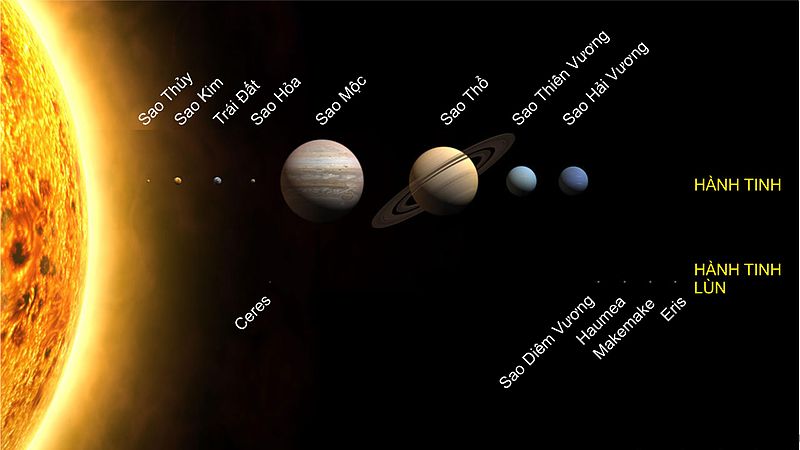Astrology.vn - Hugh Rice, astronomer of the Hayden Planetarium of New York, says, "The Sun is the source of almost all the power, heat and life on the Earth." Heat reaching the Earth amounts to 1.94 calories per minute, per square mile of the Earth's surface.

To the Egyptians it was Ra, Amen, Aten, or Osiris, each with a different religious significance. The winged globe in Egyptian art is a familiar representation of the solar orb. Atenism, the first impersonal concept of the Deity, worshipped only "the power which came from the Sun," and forbade any emblem or idol that would tend to substitute a symbol for the thing itself. To The Persian it was Mithras; to the Hindu, Brahma; to the Chaldean, Bel; and to the Greek, Adonis and Apollo. In Free-masonry Sol-om-on, the name of the Sun in three languages, is an expression of light.
Actually the Sun has no visible motion, although we know it moves because nothing in the universe can hold its place by standing still. However, ancient astrology dealt with things as they appear rather than as they are; just as the wind which blows South was to the ancients the North wind because it came out of the North. Therefore, when astrology speaks of the Sun's motion we must not overlook the fact that what we actually mean is the Earth's motion which we measure by or describe in the terms of the apparent motion of the Sun. That the ancient masters knew this, can be seen in the order of the planetary hours: Saturn, Jupiter, Mars, Sun, Venus - the placing of the Sun between Mars and Venus clearly showing that it represents the Earth in this sequence.
The Nodes at which the Earth intercepts the plane of the Sun's equator, lie at heliocentric longitudes 75° and 255°, which the Earth crosses in Junc and December. The Sun's North Pole is inclined toward the Earth by 7° in July, and away from the Earth by 7° in January. The plane of the Sun's orbit is not known, but since the Milky Way galaxy is a flat disc of stars it is probable that the Sun's orbit does not deviate to any great extent from the average of the stars within the galaxy - similar to the orbits of the planets which lie within a narrow band that extends some 7° on either side of the Ecliptic.
We do know that the plane of our ecliptic is inclined to the plane of the Milky Way galaxy at a steep angle of approximately 50° hence the three-dimensional motion of the Earth with reference to the orbit of the Sun must involve a considerable degree of elevation and depression above and below the plane of the Sun's orbit; also that there must be a considerable declination of the Sun's pole with reference to its orbit, not unlike that of the Earth's pole to which we ascribe our seasonal variations. Because of this, the Nodes where the Earth intersects the Sun's equator are not the same as those at which the Earth intersects the plane of the Sun's orbit. It is not improbable that the latter nodes may pursue a precessional cycle not unlike that of the Moon's Nodes.
The Sun is a variable star, unlike any other star yet discovered. It revolves from East to West; i.e., looking down on its North pole, it moves counter-clockwise. Its period of rotation at the Equator is 24.65 d.; at the pole, 34 d. Its mean period as seen by the Earth is 25.38 d.; but its synodical period of rotation is 27.25 d.
The diameter of the Sun is 864,392 miles. Driving in an automobile at the rate of 500 miles a day, it would require 14 y, 10 m, 2 d, to circle the Sun.
Its weight in tons is 2,200 plus 24 ciphers, or 2.2 octillion tons. In bulk it could contain 1,300,000 Earths.
The Sun-Earth distance - 92,897,416 miles - is taken as a unit of measurement of inter-solar system space, and is known as one Astronomical Unit. Its light requires 498.59 seconds, or about 8 1/3 minutes, to reach the Earth. To travel the distance by an airplane at 300 miles per hour, would consume 35 years; to walk at 4 m.p.h., 6300 y.
Hugh Rice, astronomer of the Hayden Planetarium of New York, says, "The Sun is the source of almost all the power, heat and life on the Earth." Heat reaching the Earth amounts to 1.94 calories per minute, per square mile of the Earth's surface. One caloric is the amount of heat required to raise one gram of water by one degree of temperature.
In terms of power the Sun's radiation amounts to 1.51 h.p. per sq. yard of the Earth's surface, or 643,000 h.p. per sq. mile. Were it not for loss by curvature and reflection it would amount to 4,690,000 h.p. per sq. mile, or for the entire surface of the Earth, 127 plus twelve ciphers, or 127 trillions of horsepower - more than we could possibly use. Actually our absorption amounts to from 0.34 to 0.38 h.p. per sq. yard, or the equivalent of a 60-watt lamp in continuous operation. When it is recalled that the Earth as seen from the Sun is a point in the sky apparently less than half as large as Venus when it is our brilliant evening star, and that this is the tiny object which intercepts a total of 230 million-million horsepower of solar radiation, it becomes evident that the Sun radiates an incomprehensible amount of energy. Indeed, we find that it radiates nearly 2,200,000,000 times as much energy as that which lights and warms and gives life to our planet, and hundreds of millions of times as much energy as is intercepted by all the planets, satellites, and planetoids combined.
Most of the Sun has a temperature of a million degrees. Its energy travels at the rate of 186,271 miles per second. The Sun's heat would melt a block of ice the size of the Earth in 16.6 minutes; a block of iron of the same size, in Less than 3 hours. Its heat for a year is equal to the burning of tons of coal amounting to 400 Plus 21 ciphers.
The Sun's Spectrum of visible light extends from 7700 Angstrom units on the red end, to 3600 Angstrom units on the violet end. An Angstrom unit is one ten-millionth of a millimeter. A millimeter is 1/25th of an inch. A wave of red light measures one 32-thousandths of an inch; of violet, one 64-thousandths. Hence the visible Spectrum consists of one octave, although 40 octaves are known to Science. The ultra-violet band extends from 3600 to 1000 Angstrom units. However, the ozone in the Earth's atmosphere cuts out all rays shorter than 2900 A.U. Tanning is nature's way of protecting the body against an excess of ultra-violet radiation.
The Sun's Spectrum of visible light extends from 7700 Angstrom units on the red end, to 3600 Angstrom units on the violet end. An Angstrom unit is one ten-millionth of a millimeter. A millimeter is 1/25th of an inch. A wave of red light measures one 32-thousandths of an inch; of violet, one 64-thousandths. Hence the visible Spectrum consists of one octave, although 40 octaves are known to Science. The ultra-violet band extends from 3600 to 1000 Angstrom units. However, the ozone in the Earth's atmosphere cuts out all rays shorter than 2900 A.U. Tanning is nature's way of protecting the body against an excess of ultra-violet radiation.
The light of the Sun is 465,000 times brighter than the Full Moon; 900,000,000 times brighter than Venus at its brightest. In the Zenith this has been computed at 103,000 meter-candles. A meter-candle is the light received from a candle at a distance of a meter.
According to the latest astronomical computations the Sun's proper motion in orbit is approx. 200 miles per second; its apparent motion towards a point in the constellation Hercules is 12 miles per second.
Chiêm Tinh Học – ASTROLOGY.vn - About us
This email address is being protected from spambots. You need JavaScript enabled to view it.
Bài liên quan: Solar System >> Solar Astrology >> Solar System Bodies: Sun >> Solar System Bodies: Earth - Moon >> Solar System Bodies: Mercury - Venus >> Solar System Bodies: Mars >> Solar System Bodies: Jupiter >> Solar System Bodies: Saturn >> Solar System Bodies: Uranus >> Solar System Bodies: Neptune & Pluto



























